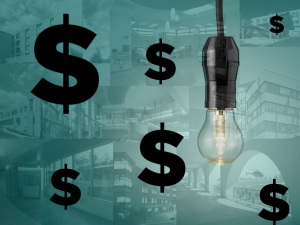
Building owners, facility managers and design teams planning new buildings or extensive building performance improvements often struggle to fund green building systems, despite favorable returns on investment. We all know that these investments save energy and minimize environmental impacts, but budgets are tight and design teams and building owners often are challenged to meet upfront capital costs. As a result, financially viable green technologies and systems can get value-engineered out of a project long before a shovel hits the ground.
As the green building market matures, however, a suite of sophisticated – and highly effective – financing tools have emerged that can significantly reduce capital costs of energy-efficient, renewable energy and other sustainability projects. Some of these financing tools can be structured to help pay for future projects. Across the country, more and more organizations and companies have utilized these tools, although they are not as well-known as they could be.
Grab the Low Hanging Fruit: Utility Incentives and Tax Credits
Where does an organization begin when thinking about alternative financing mechanisms? Incentives and tax credits are an obvious place to start, although efforts to uncover them and fill out applications should begin at the earliest phase of a project in order to maximize the funding potential of these tools. Many states and electric and gas utilities, as well as the federal government, offer incentives and tax credits that reduce the first cost of energy efficiency building investments and generally are available for both new and existing buildings. While incentives are not always a cure-all for tight budgets (a project still needs adequate financing) incentives and credits are an important strategy to research for significantly improving your project’s return on investment.
Utility Incentives
Energy efficiency and renewable energy incentives often are available from or through local or regional utilities. Why would a utility company encourage a customer to use less of its product?
- Defers the need to build new power plants, which cost the utility company MORE money.
- Utility valuation (profit) decoupled from sales.
- Ex: California Public Utilities Commission regulated utilities (PG&E, SCE, SDG&E and others)
- Marketing opportunities.
Utility incentives often are paid a lump sum cash payment upon completion of a project. Other utility programs provide energy audits and expert consultation on how best to reduce the energy use from various parts of a building or facility. Several utility incentive programs require the applicant to involve the utility during early stages of the design process so that the utility can demonstrate some measure of influence on a project’s energy efficiency. A common condition for retrofit energy efficiency incentives requires the customer to wait to begin work until after the utility (or a third party) has reviewed the proposed project, base-lined the existing building and granted an approval letter for the proposed incentives. This process can take anywhere from a few weeks to several months. Thus, submitting an incentive application as early as possible and understanding your local utility’s incentive program requirements help to avoid missing out on utility incentive opportunities.
An organization interested in pursuing energy or water reduction strategies should approach its utility company early in the project stages about alternate ways to finance projects.
Tax Credits
By contrast, energy efficiency and renewable energy tax credits and deductions are available at the state or federal level and often are taken on a corporation’s tax return. A state’s tax credit programs often are directed to attain certain goals relating to the reduction of energy use. For example, California state tax credits are available for organizations that produce renewable energy from a variety of sources, including solar, biomass, wind, geothermal and waste-to-energy systems.
Alternative financing mechanisms allow your project to get ahead of the cost and regulatory curves that are likely to be faced in the near or long term. As demonstrated, your primary consideration for finding alternative project financing is to start early. Your engineering design firm should have experience in alternative project financing to be able to uncover the right incentives and financing to maximize sustainable features in the project design, conduct a thorough financial analysis and connect your project effectively with financing entities. As alternative financing sources are discovered and investigated, this can spur new design approaches for the original project. Thus, the design and financing of a sustainable project can introduce a productive feedback cycle that actually enhances a design. This process more accurately describes the originally intended definition of “value engineering” in contrast to the notorious process with which it has become associated today.
